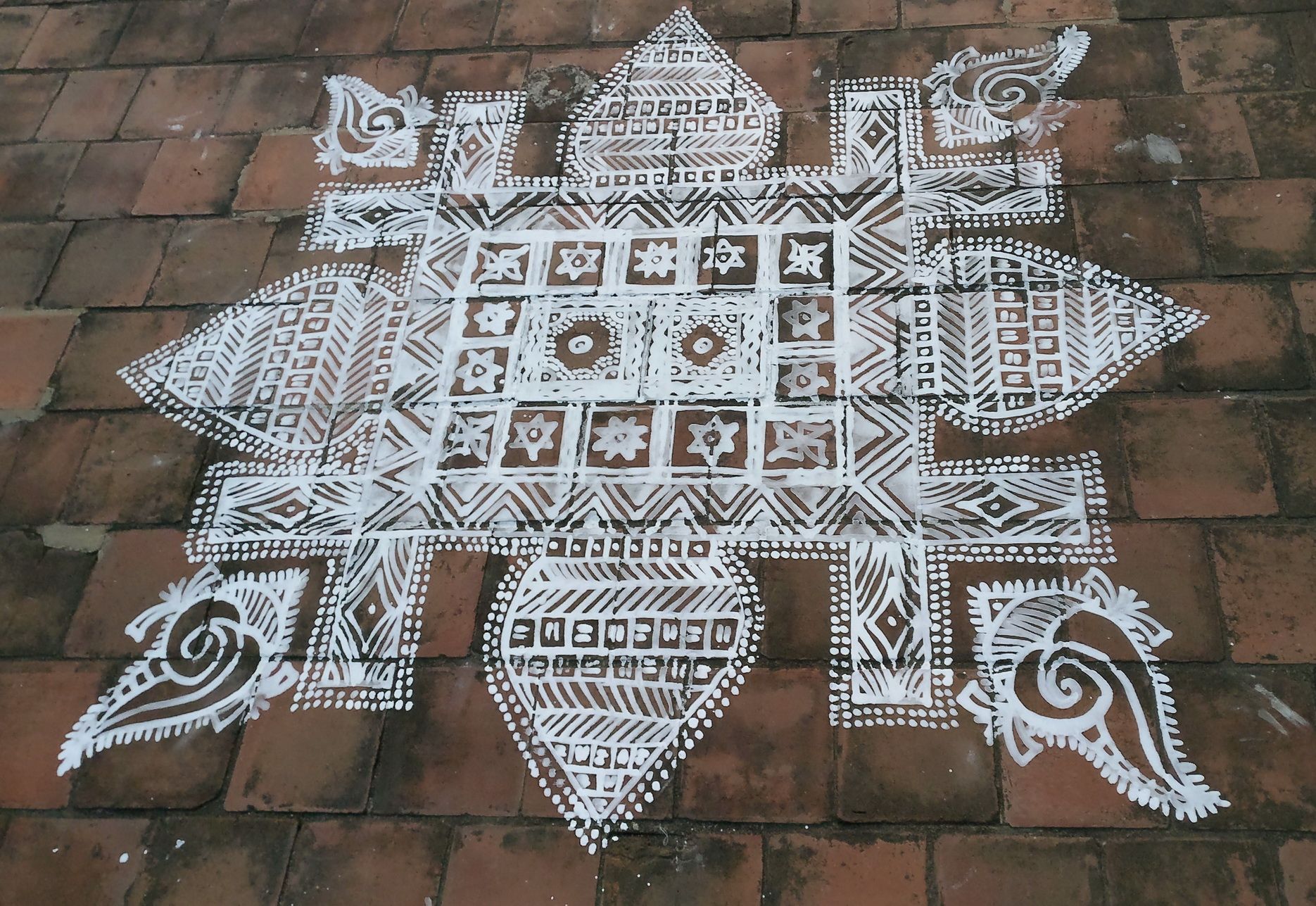Nadu veetu kolam, the Chettiar way — part 2
In the case of Chettiar, it is as if the only way to narrate their globe-trotting lifestyle and mindset had been through constructing houses like fortresses to safeguard the family wealth. No wonder that the kolam symbolizes the house.

Occasionally, the kolam reflects the intrinsic values of a community. The lines, the choice of symbols tell the hidden story on how society, geography and religion shaped the designs. In the case of Chettiar, it is as if the only way to narrate their globe-trotting lifestyle and mindset had been through constructing houses like fortresses to safeguard the family wealth. No wonder that the kolam symbolizes the house and is drawn at each family function as the sanctum sanctorum of this trading clan. A miniature mansion as a vital point, a visual prayer inviting members scattered all over the world to reunite and celebrate together.
Domestic rituals are essential to maintain the cohesion of the family which in turn foster community ties. Drawing a kolam starts with a central square personifying the house. It is further divided in two cells for accommodating earthen pots on clay stoves in which rice will be cooked on Thai Pongal. In Chettinad two types of pongal are cooked: ven pongal (rice cooked with clarified butter and spices) and sakkarai pongal (rice cooked with jaggery) in milk.
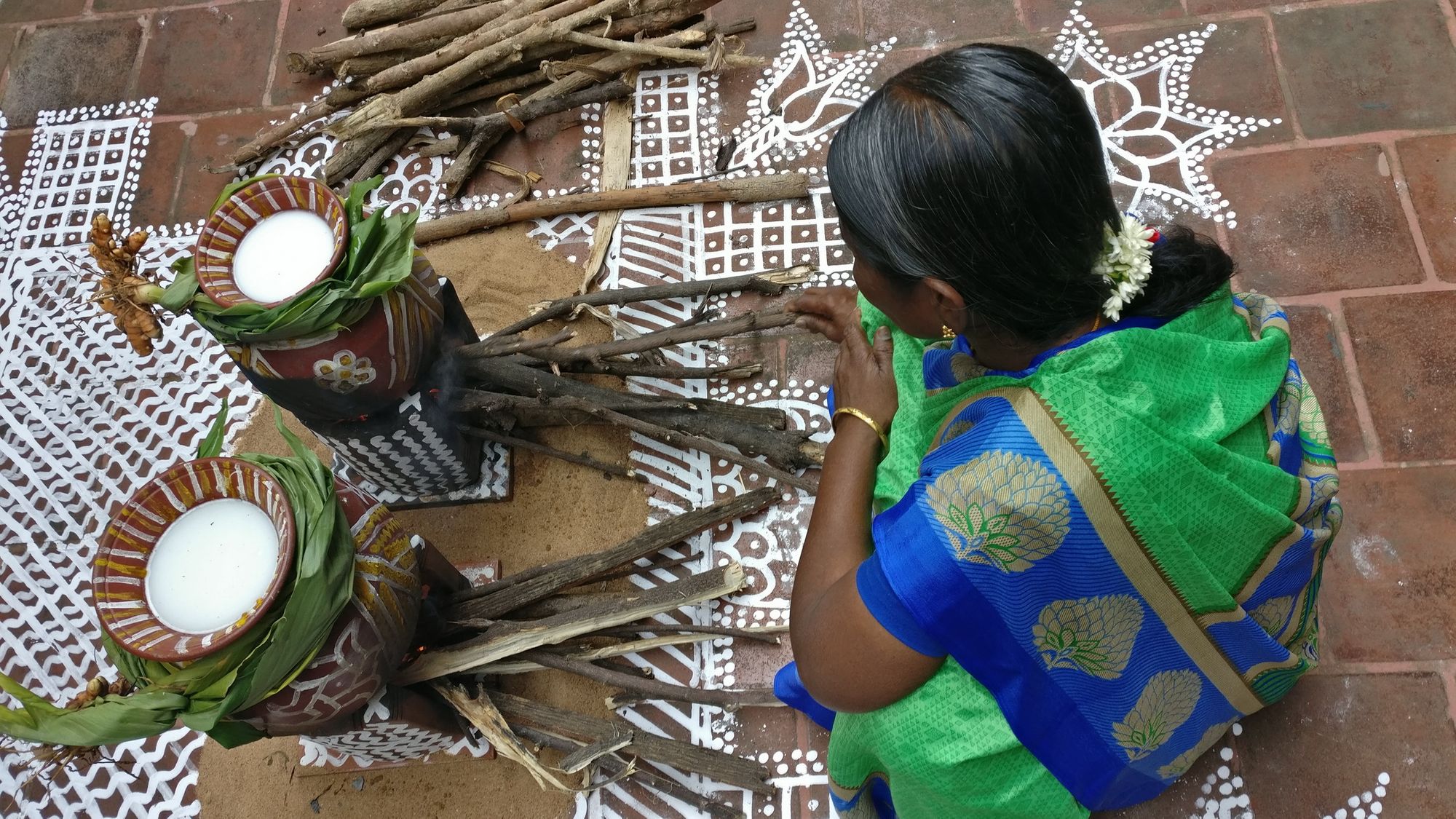
Each family leaving under one roof is entitled to two cells on a kolam which stand for two clay stoves. If three families then, six cells. The wavy lines running all over the kolam like ripples in a river connect all family members and Chettiar aachis (a title of respect as well as endearment for matriarchs of the clan) draw lines so closely together that they almost overlap as to reinforce the existing ties. It has always been the role of women to supervise homes without male support while the men went about their business in distant lands.
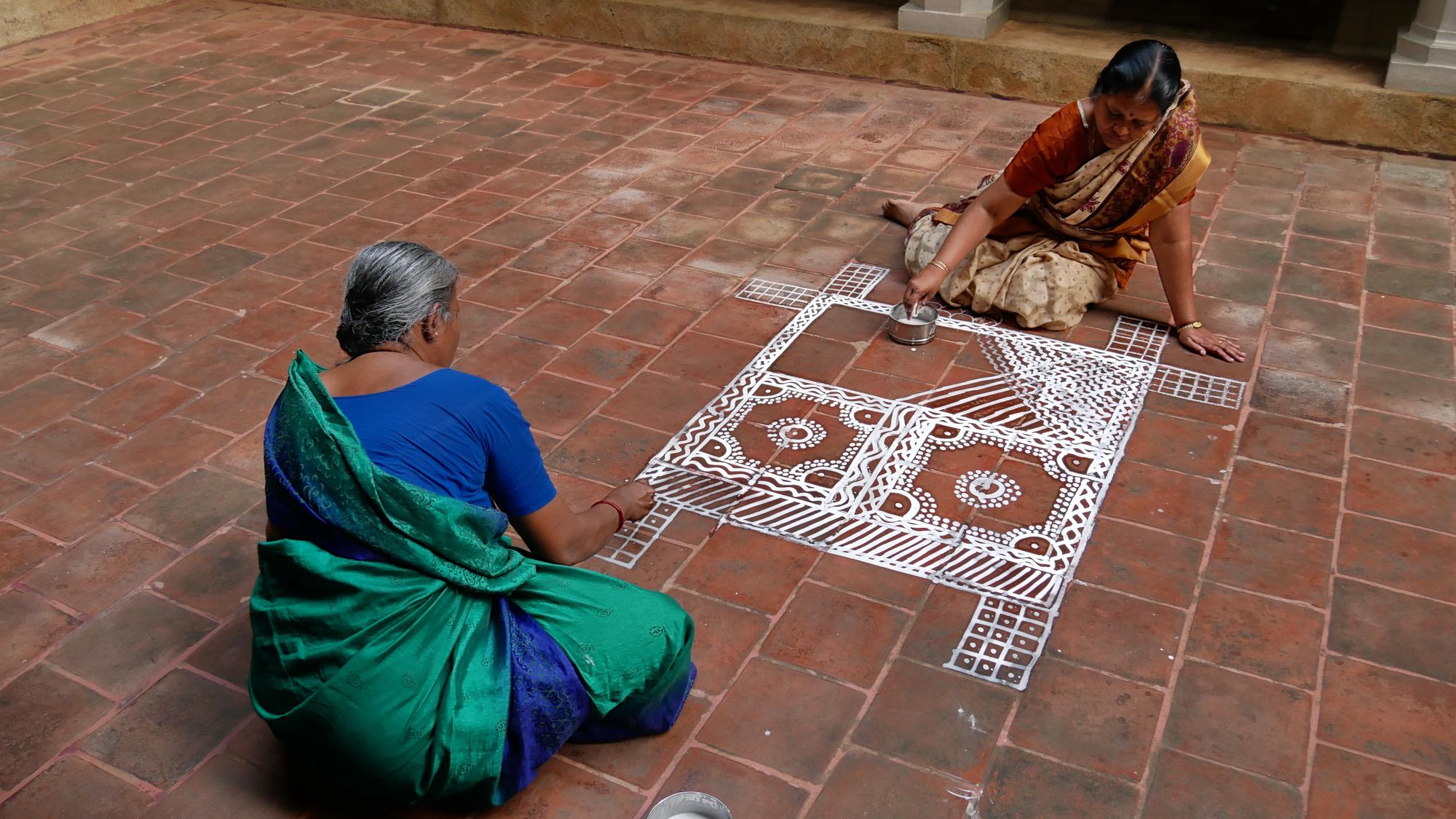
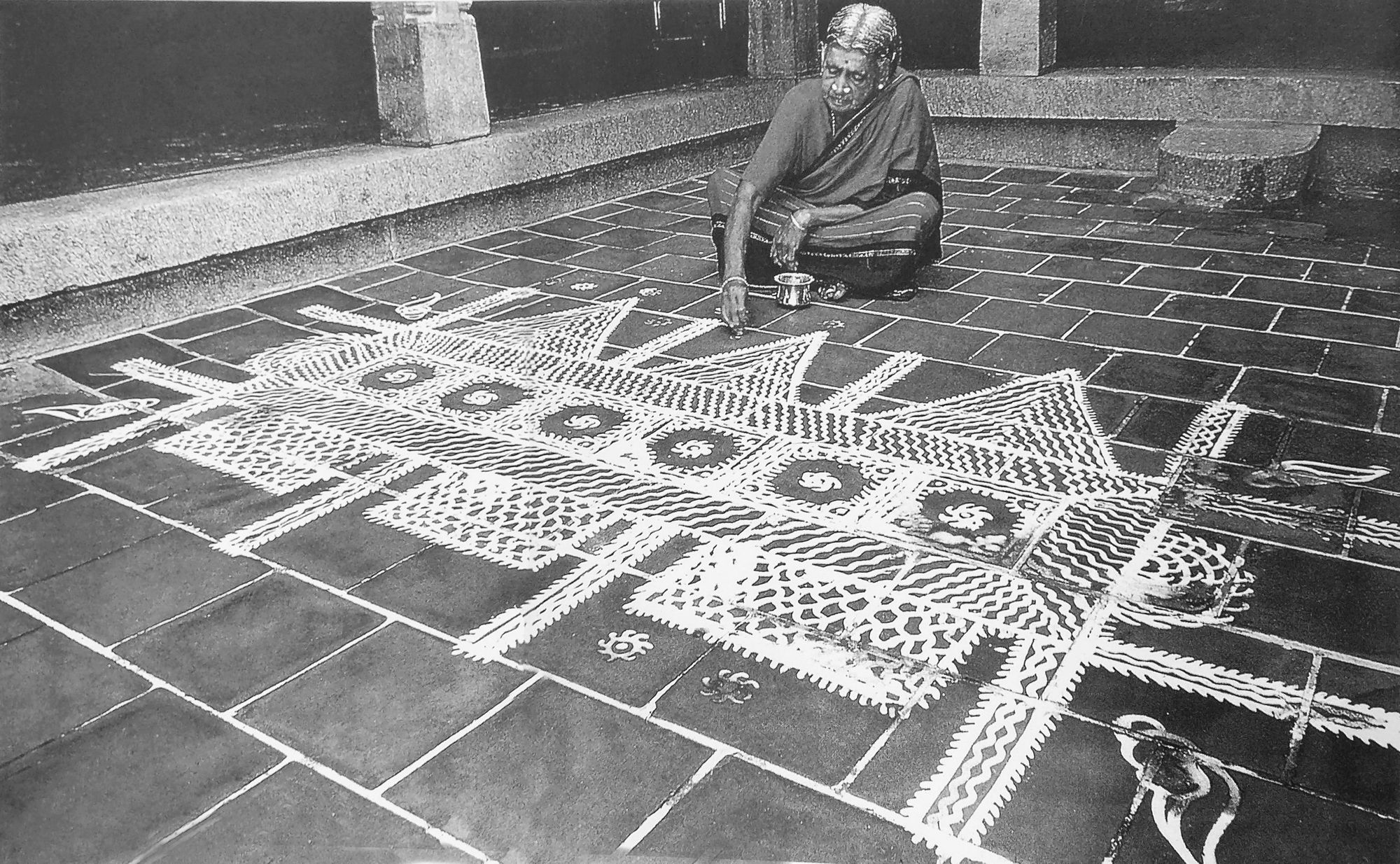
Immediately after the square, eight pillars supporting the house are drawn and decorated with lines. Another Chettiar woman met in Chennai, added further explanations: "The eight lines represent the Ashta Dikpâla or the guardian deities who rule the specific directions of space according to Hinduism. As men were traveling in distant lands, these regents of the Directions were worshipped to favour good news to reach home regardless of where in the world."
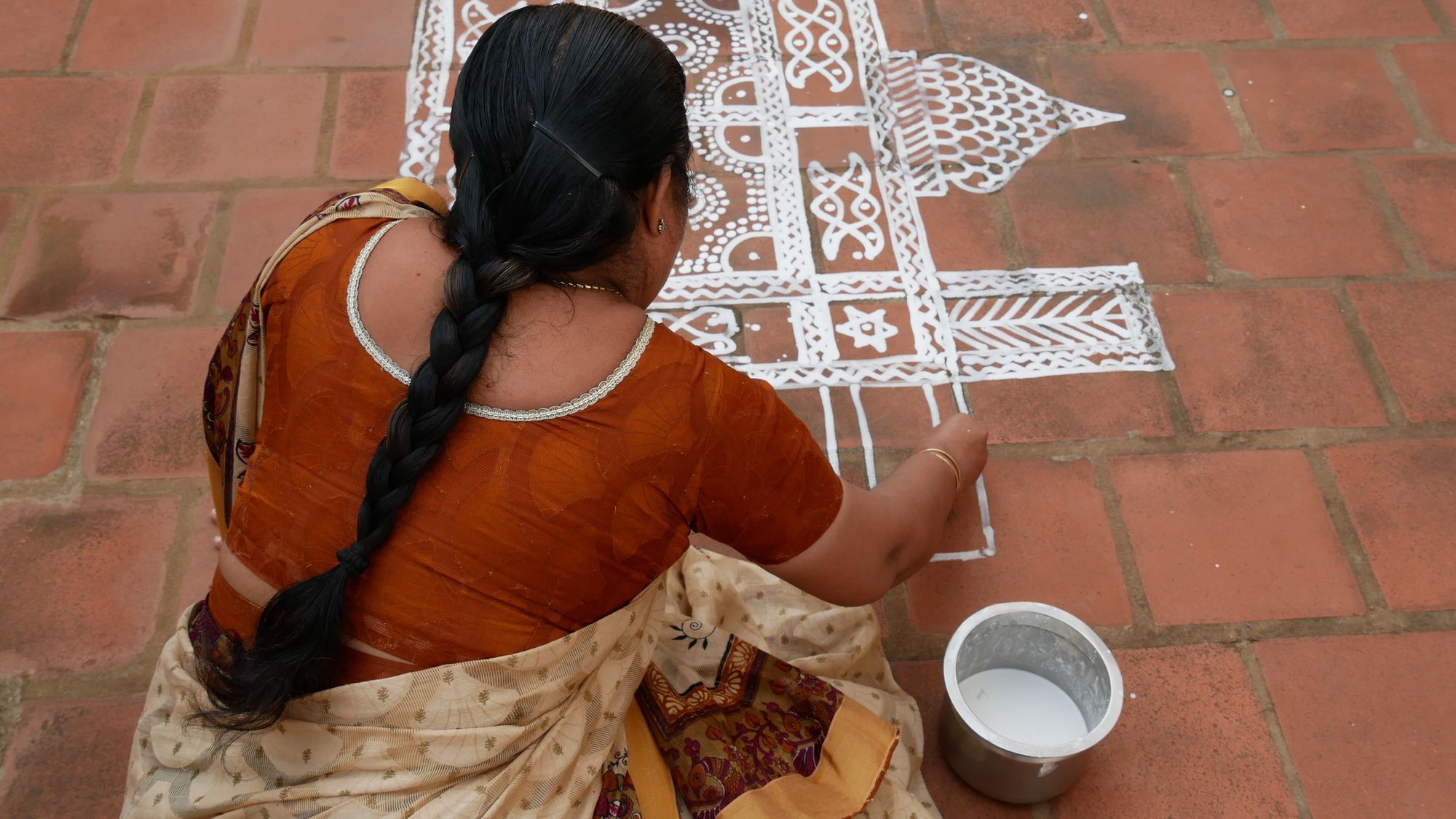
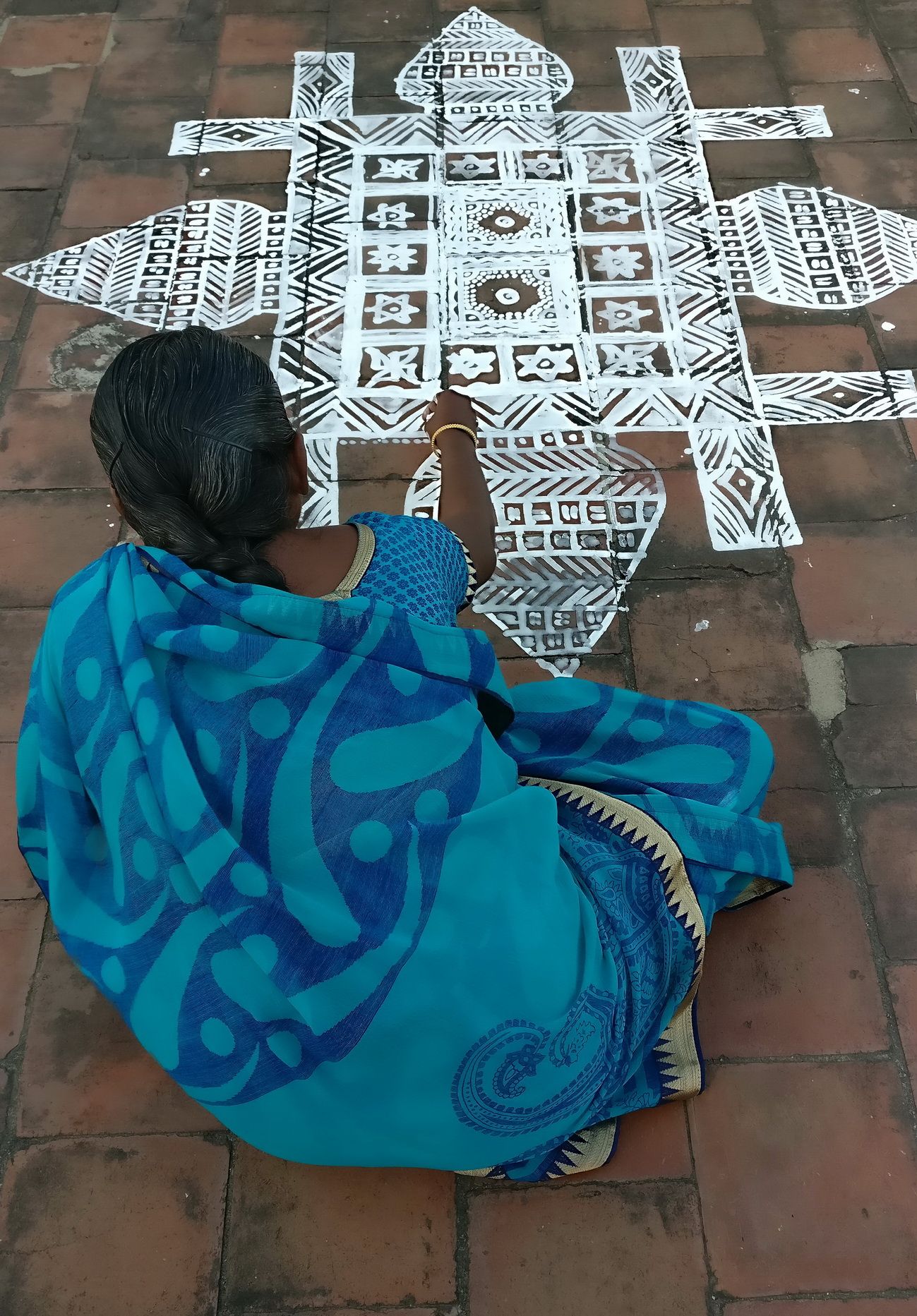
Roofs are added and the entire kolam is bordered by two row of dots. According to various sources, the dots stand for the family unit and the multiplication of them in the kolam symbolizes the wish to have a large number of descendants. Another lady told me that the double rows of dots stands for the couple sticking together as a fundamental unit.

The conch (shankhu) stands for Vishnu and Lakshmi but according to another lady, it may also refer to the ocean as Chettiar were known to cross the seas to do business and settle in Malaysia, Singapore and other places.
